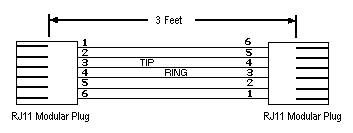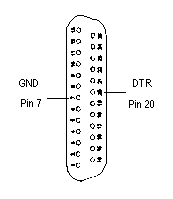BC Triton
Series
Chapter 5 - Troubleshooting
Continual Resets
The Cubix Supervisory System supports a CPR (Cubix Processor Recovery) function designed to automatically reset an inactive BC Triton Series processor. If a Supervisory System is installed with the CPR function enabled and a BC Triton Series processor continuously resets, follow the steps below.
DOS Environments - BCSETUP.SYS must be loaded
Windows Environments - BCSETUP.SYS must be loaded
OS/2 Environments - BCSETOS2.SYS must be loaded
NetWare Environments - BCACTIVE.NLM must be loaded
NIC Driver Installation
To use the integrated Ethernet controller on the BC Triton Series processor, a NIC driver must be installed. The onboard Ethernet is based on a DEC 21140 chip. In Novell environments, the name of the driver is DC21X4.LAN (for BC Triton Series processors installed as NetWare servers or routers) or DC21X4.COM (for BC Triton Series processors installed as NetWare workstations).
Resets on Modem Initialization
If a BC Triton Series processor is configured as a host for remote communication sessions, and the BC Triton Series resets when the remote communication software is loaded, examine switch S1. If reset on loss of DCD is enabled, the modem is probably toggling DCD during initialization. Contact the modem vendor to determine how to correct this condition.
Mouse Problems
Sometimes problems occur if a mouse is connected to a BC Triton Series processor via a multiplexer (mux). For proper muxed mouse operation under DOS (or Windows) the following steps must be taken.
1. The CONFIG.SYS file must contain the line: device = bcsetup.sys
2. A mouse driver must be loaded (e.g., Logitech's MOUSE.COM or Microsoft's MOUSE.EXE).
3. The mouse device must be a Logitech PS/2 style bus mouse.
4. The processor must boot with the segment selected so that the mouse is detected when the driver loads.
If MUXed operation is required with Windows V3.1, these additional steps must be followed:
Line Busy
If the Line Busy Circuit does not cause the line to appear busy, check the cable connections.

Figure 5 - 1. RJ-11 Tip and Ring Lines
The center two pins of the RJ-11, tip and ring, should measure approximately 48 volts DC under on-hook conditions. When the Line Busy Module has asserted an off-hook condition, the tip-ring voltage should be approximately 8 volts DC
If the Line Busy Circuit is not asserting off-hook, check the state of the DTR signal (pin 4 of the DB-9 RS-232 connector). DTR is false when it is -6 volts with respect to pin 7 of this connector. DTR is true when it is +6 volts with respect to pin 7. The voltage on pin 20 can be measured on the modem DB-25 connector while the computer DB-9 connector is cabled to the Cubix processor.

Figure 5 - 2. DB-25 Connector
If DTR is not changing as expected, check the Cubix processor's COM1 port hardware. Verify the COM1 port configuration in the communication application software.
If DTR is changing properly and the telephone line is not changing from 48 volts to 8 volts, the Line Busy Circuit is probably defective. Contact Cubix Customer Service for assistance.
This document, and all Web contents, Copyright © 1997 by Cubix Corp., Carson City, NV, USA.